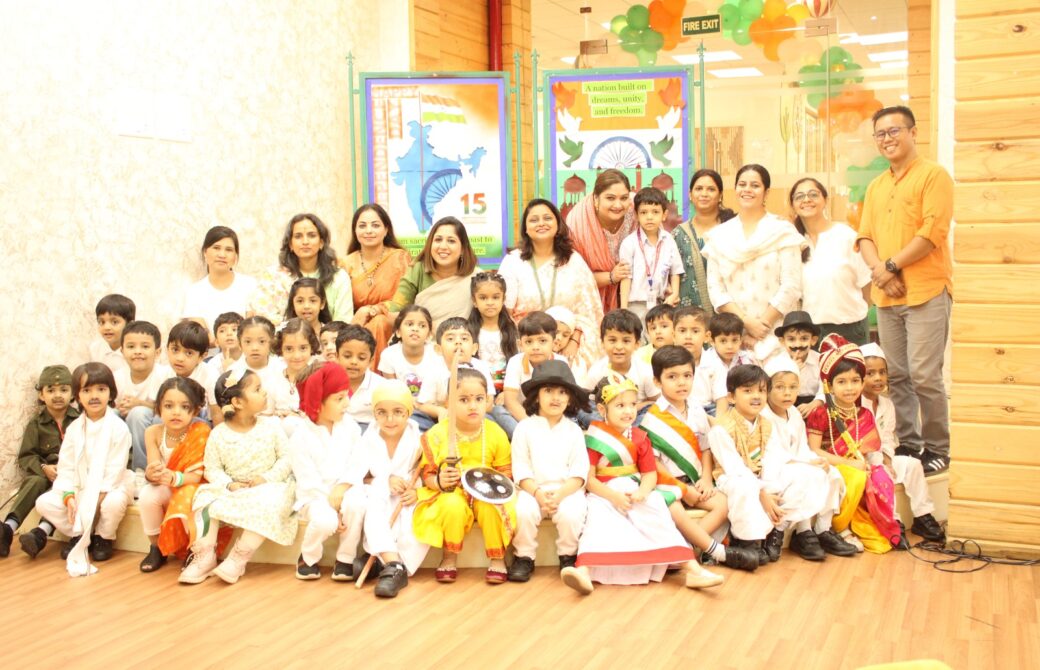Introduction:
In today’s interconnected world, academic success is no longer defined by classroom achievements alone. At Summer Fields School, the Top Schools in Gurugram where true education is about nurturing global citizens who can adapt, collaborate, and innovate across borders. Parents seeking the schools often focus on institutions that provide international exposure, especially through exchange programs. These initiatives bridge cultural gaps, broaden perspectives, and prepare children to thrive in a global society.
This article explores how exchange programs redefine learning, why they are integral to modern education, and how they shape confident, future-ready leaders.
About Us:
A future-ready education isn’t limited to classrooms—it extends across borders. The institution encourages cultural awareness and global citizenship by engaging students in programs that bring international perspectives closer. Learners participate in cultural exchanges, global Olympiads, and international collaborations that widen horizons. Annual events such as CyFerNode and thematic exhibitions offer platforms to interact with global trends in technology, sustainability, and innovation. Alongside, co-curricular activities—sports, clubs, art, and music—foster collaboration and creativity. With excursions, house activities, and interactive fests, learners gain both local and international exposure. Guided by the principle of “learning by doing,” this approach equips students with adaptability, cultural sensitivity, and confidence. It ensures they are not only prepared for academic success but also capable of thriving in diverse global environments.
Why Global Exposure Matters
Global exposure has become essential for 21st-century learners. The ability to understand diverse cultures, engage with international peers, and experience different educational systems helps students:
- Expand Worldviews – Children develop empathy and cultural sensitivity.
- Adapt to Diversity – Exposure to varied perspectives sharpens critical thinking.
- Enhance Communication Skills – Practicing languages and public speaking in real-world contexts.
- Prepare for Higher Education Abroad – Early familiarity with global systems smoothens transitions.
- Gain Confidence – Facing new environments builds resilience and independence.
What Are Exchange Programs?
Exchange programs are structured initiatives where students travel abroad or engage virtually with learners from different countries. They may last a few weeks, a semester, or even a full academic year. These programs allow participants to:
- Live with host families or in international dorms.
- Attend partner schools with different curricula.
- Participate in cultural activities, excursions, and community service.
- Collaborate on global academic or social projects.
Types of Student Exchange Programs
- Short-Term Cultural Exchanges : Designed for a few weeks, these focus on cultural immersion, sightseeing, and basic interaction. Students gain exposure without disrupting academic schedules.
- Semester or Year-Long Academic Programs : Students live abroad for an extended period, attending classes, joining clubs, and experiencing full cultural integration.
- Virtual Exchange Programs : Technology-driven programs allow students to connect with international peers through video conferencing, joint projects, and online discussions—perfect for accessibility and cost-effectiveness.
- Subject-Specific Exchanges : These are linked to fields like STEM, arts, or social sciences. For example, a robotics exchange program may bring together students from different nations to innovate collaboratively.
- Teacher Exchange Programs : Educators swap schools temporarily, bringing diverse teaching methods and cultural insights back to their home classrooms.
Benefits of Exchange Programs
Academic Advantages
- Exposure to new teaching styles and international curricula.
- Access to advanced labs, libraries, and innovative learning techniques.
- Opportunities to participate in global competitions and workshops.
Personal Development
- Independence gained by adapting to life in a new country.
- Resilience built through challenges such as language barriers or cultural adjustments.
- Confidence developed by interacting with peers from around the world.
Cultural Awareness
- Direct experience with festivals, traditions, and local lifestyles.
- Respect for diversity and inclusivity.
- Lifelong friendships that transcend borders.
Career Readiness
- A global mindset valued by universities and employers.
- Experience that enhances resumes and college applications.
- Networking opportunities with global peers and professionals.
How Exchange Programs Are Implemented in Progressive Schools
- Partnerships with International Institutions : Schools collaborate with global counterparts in Europe, North America, Asia, and Australia to create structured exchange opportunities.
- Pre-Departure Training : Workshops prepare students for cultural sensitivity, basic language phrases, and expected challenges.
- Ongoing Guidance and Mentorship : Teachers and coordinators accompany students during exchanges, ensuring safety and academic continuity.
- Post-Program Integration : On return, students share experiences through presentations, projects, or cultural days, enriching their peers as well.
Real-World Impact of Exchange Programs
- Language Fluency – Students often return with improved skills in English, French, German, or Spanish.
- Global Awareness – Learners become more conscious of world issues like climate change, human rights, or technology ethics.
- Leadership Skills – Taking initiative in foreign environments strengthens decision-making abilities.
- Higher Education Edge – International exposure is a significant plus for applications to Ivy League, Oxbridge, or top Asian universities.
Role of Parents in Exchange Programs
Parents play a critical role in ensuring the success of these opportunities:
- Encouragement – Motivating children to step out of their comfort zone.
- Preparation – Discussing cultural differences and helping with language basics.
- Support – Staying emotionally available while children navigate challenges abroad.
- Collaboration with Schools – Working with teachers to select the right type of program.
Overcoming Challenges in Exchange Programs
- Financial Constraints – Scholarships and sponsorships help families manage costs.
- Safety Concerns – Schools ensure strict protocols, reliable host families, and emergency support.
- Academic Continuity – Credit transfer systems and virtual learning prevent academic disruption.
- Emotional Adjustments – Counseling support before, during, and after exchanges helps students manage cultural shock.
How Exchange Programs Prepare Future Leaders
Global leaders require adaptability, cultural sensitivity, and the ability to collaborate internationally. Exchange programs cultivate exactly these traits by:
- Encouraging cross-cultural teamwork.
- Inspiring innovation through exposure to new ideas.
- Building empathy and global responsibility.
- Creating confident communicators and critical thinkers.
Why Parents Prefer Institutions Offering Exchange Opportunities
When parents explore the schools, they often prioritize those with active international partnerships. The presence of exchange programs signals:
- A forward-thinking curriculum.
- Commitment to global standards.
- Dedication to student growth beyond academics.
- A competitive edge for college admissions and career opportunities.
The Future of Exchange Programs
The coming years will see exchange programs become more hybrid—blending physical travel with virtual collaborations. Trends include:
- Global Classrooms – Real-time joint lessons across countries.
- Sustainability-Focused Exchanges – Projects tackling climate change, conservation, and green technology.
- Skill-Based Programs – STEM, entrepreneurship, and digital literacy-driven exchanges.
- Cross-Continental Collaborations – Students from multiple countries working together on one shared mission.
Conclusion:
Exchange programs redefine learning by transforming classrooms into global gateways. At Summer Fields School, the Best Schools in Gurugram where they provide students with cultural awareness, academic enrichment, and personal growth opportunities that no textbook alone can offer. For parents evaluating the schools, international exposure is more than a benefit—it is a necessity for raising confident, adaptable, and globally minded citizens.
In an increasingly borderless world, such programs ensure that children don’t just learn about the world but actively participate in shaping its future.
FAQs:
Q. 1. Why is global exposure important for students?
Ans : It builds cultural awareness, adaptability, and a broader worldview—qualities essential for modern success.
Q. 2. What types of international opportunities are usually available?
Ans : Exchange programs, international Olympiads, collaborative projects, and foreign language courses.
Q. 3. How do exchange programs impact personality development?
Ans : Students gain confidence, independence, and empathy by immersing themselves in diverse environments.
Q. 4. Do global exposure initiatives improve career prospects?
Ans : Yes, they strengthen university applications and provide a competitive edge in professional life.
Q. 5. How are parents assured of safety in international programs?
Ans : Schools ensure vetted partnerships, safe accommodations, and constant communication with families.
Q. 6. Are global opportunities limited to academics?
Ans : Not at all—students also explore cultural exchanges, art, sports, and leadership programs.









